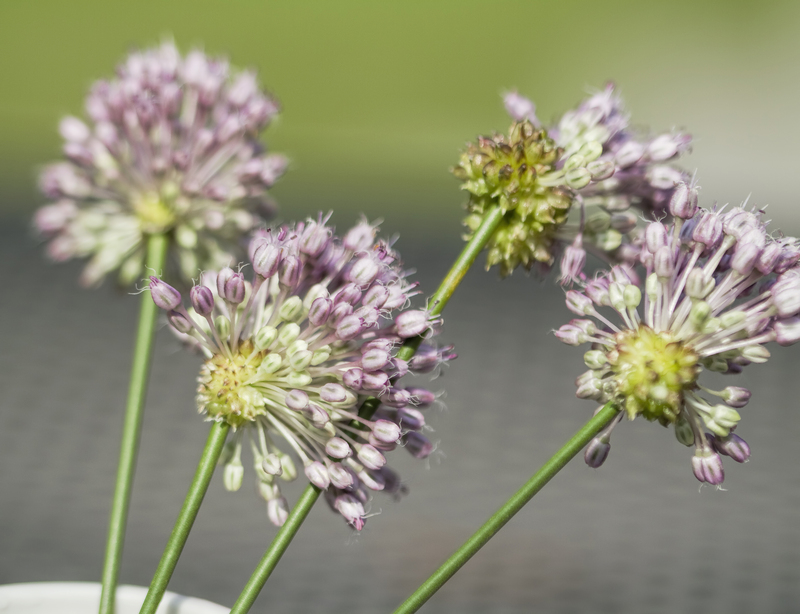Winter-Proofing Your Garden for Plant Survival
Posted on 29/06/2025
Winter-Proofing Your Garden for Plant Survival: Essential Strategies and Tips
If you're a plant enthusiast, keeping your garden thriving through the freezing months demands proactive steps. Winter-proofing your garden for plant survival is not just for expert gardeners; anyone can help their plants endure the harsh season with some planning and know-how. This comprehensive guide shares proven, practical strategies to protect your plants and set them up for a resilient spring comeback.
Why Winter-Proof Your Garden?
Winter weather can be brutal for both annuals and perennials. Freezing temperatures, snow, ice, and biting winds stress plant tissues, degrade soil quality, and threaten overall plant survival. Winter-proofing doesn't just shield plants, it also preserves the hard work you've invested all year. By understanding and applying the right techniques, you'll minimize plant loss, promote robust spring growth, and foster a thriving, healthy garden ecosystem.

Understanding Plant Vulnerability During Winter
Not all plants are created equal when it comes to winter hardiness. While some native species and cold-hardy varieties breeze through winter, others (especially exotics and tender perennials) may suffer or perish without intervention.
Key Factors That Affect Plant Survival
- Plant Hardiness Zone: Check your USDA Hardiness Zone to choose species suited for your climate.
- Soil Condition: Poor drainage can cause waterlogged roots that freeze more easily.
- Wind Exposure: Persistent winter winds dehydrate and damage exposed plants.
- Snow and Ice Accumulation: Excess weight may snap branches or stems and suffocate evergreen foliage.
- Sudden Freeze-Thaw Cycles: Repeated thawing and refreezing damages plant roots and tissues.
- Sun Exposure: Winter sun, especially on clear days, can trigger premature budding followed by frost damage.
Winter-Proofing Your Garden: Step-by-Step Strategies
Winterizing your garden means preparing it for the unique challenges of the coldest months. Below, we break down the essential steps every gardener should follow to ensure maximum winter plant resilience.
1. Assess and Plan Your Winter Garden
- Take Inventory: List out all the plants in your garden, noting which are hardy and which are most vulnerable.
- Prioritize Protection: Identify high-value or sentimental plants that need extra care.
- Gather Supplies: Collect mulch, burlap, cloches, garden fleece, stakes, and covers before the first frost hits.
A thoughtful plan prevents last-minute scrambles and ensures you're ready when sudden cold snaps arrive.
2. Mulching: Insulate Your Plant Roots
Mulching is the cornerstone of winter-proofing any garden for plant survival. A thick layer of organic mulch acts as a blanket, protecting root systems from extreme temperature fluctuations and retaining critical soil moisture.
- Apply a 3-6 inch layer of mulch around the base of perennials, trees, and shrubs after the ground begins to freeze but before the heavy snows.
- Use straw, shredded leaves, pine needles, or wood chips for best results.
- Keep mulch a few inches away from the actual plant stems or trunks to avoid rot.
3. Water Plants Deeply Before Freeze
Dry roots are more susceptible to winter damage. Before the first hard frost, water your garden thoroughly--especially evergreens and newly planted specimens.
- Soil moisture acts as insulation, holding warmth longer than dry soil.
- Avoid watering once the ground has frozen, as excess water can freeze and damage roots.
4. Prune and Clean Up The Garden
Effective winter-proofing involves reducing opportunities for disease and pest problems:
- Remove dead or diseased foliage and dispose of it away from the garden.
- Prune back perennials according to species guidelines but avoid heavy pruning of shrubs or trees, which could result in winter die-back.
- Clean out fallen fruit, vegetables, or debris to prevent attracting rodents.
5. Protect Tender and Young Plants
- Wrap sensitive shrubs and small trees with burlap or garden fleece to shield against wind and frost.
- Use plant covers, cloches, or even overturned buckets on unexpectedly frosty nights for annuals and tender perennials.
- Group potted plants together in sheltered locations (close to walls, under overhangs) and insulate containers with bubble wrap or straw bales.
6. Shield Against Harsh Winter Winds
Wind is one of winter's most destructive forces, causing **desiccation** and physical damage. Use one or more of the following methods:
- Install temporary windbreaks with stakes and burlap screens on the windward side of exposed beds.
- Plant evergreen hedges or fast-growing windbreak trees as a long-term solution.
7. Safeguard Your Lawn and Perennial Beds
- Avoid walking on frozen lawns; this can damage grass crowns and compact the soil.
- Apply winter fertilizer (according to soil tests) before the ground freezes to strengthen root systems and encourage lush growth in spring.
- Top-dress perennial beds with compost in late autumn for a nutrient boost.
8. Deal With Snow and Ice Properly
Snow, though heavy, acts as an insulator for many plants. However, ice buildup is problematic:
- After heavy snowfalls, gently brush snow off tree branches and shrubs with a broom, starting from the bottom up to prevent breaking.
- Never attempt to break off ice; let it melt naturally to avoid damaging plant tissues.
- If heavy snow is expected, create temporary frames over vulnerable plants to shed snow load.
Protecting Specific Plant Types During Winter
Winter Protection for Trees and Shrubs
- Young trees, especially fruit trees, are prone to sunscald and frost cracks. Wrap trunks with tree guards or use white tree paint to reflect sunlight and buffer against temperature swings.
- Add extra mulch around newly planted specimens (but not directly against the trunk).
- Stake newly planted trees to prevent wind rock and root disturbance.
Safeguarding Perennials and Roses
- Mound compost or mulch at the base of tender perennials and roses (the "Minnesota tip" method) for superb winter insulation.
- For climbing roses, lay down stems along the ground if possible and cover lightly with mulch and leaves.
- Don't prune roses in autumn--wait until spring to avoid stimulating new frost-vulnerable growth.
Winterizing Vegetable Gardens
- Remove all spent vegetable plants and debris to reduce overwintering pests and disease.
- Plant cover crops (like winter rye or clover) to prevent erosion and improve soil fertility for spring.
- Cover empty beds with cardboard and a thick layer of straw to suppress weeds and retain quality.
Taking Care of Container Plants
- Move delicate containers into a garage, basement, or shed; cold frames or greenhouses are ideal if available.
- If containers must stay outdoors, gather them together in sheltered corners, elevate off cold concrete, and wrap pots with insulating material.
- Use frost blankets or old towels for extra cold nights, but remove during the day to prevent excessive humidity.
Common Mistakes to Avoid When Winter-Proofing Your Garden
- Applying Mulch Too Early: Wait until the first hard frost; early mulching can attract overwintering pests and delay plant dormancy.
- Overwatering or Watering After Freeze: Waterlogged soil is susceptible to freeze damage; only water before ground freezes.
- Improper Use of Plastic: Do not leave plastic covers on plants in sunny winter weather. It traps moisture, fostering rot and fungal disease.
- Forgetting to Protect the Roots: Roots are often more winter-vulnerable than visible plant parts--don't skimp on mulch here.
- Neglecting Structural Protection: Snow loads easily break unsupported limb and branch structures.
Preparing for Spring Recovery After Winter
Winter-proofing is only part one of plant survival; part two is careful post-winter care to revive your garden:
- Gradually remove protective mulches as the weather warms.
- Inspect for winter damage and prune out broken or diseased growth quickly.
- Water as needed if spring weather is dry--plants emerging from dormancy require consistent moisture.
- Apply a balanced, organic fertilizer to support renewed growth.
Eco-Friendly Tips for a Sustainable Winter-Proof Garden
- Use organic and biodegradable materials for mulching and wrapping.
- Recycle fall leaves for insulation instead of bagging them for disposal.
- Cultivate native plant species that are inherently adapted to your region's winter.
- Minimize use of chemical de-icers near plant beds; opt for sand or pet-safe de-icing products when necessary.
Winter-Proofing: A Year-Round Mindset
True winter-proofing your garden for optimal plant survival starts long before the cold weather hits. Good cultural practices--such as proper site selection, choosing hardy varieties, feeding your soil, and observing plant health--help your garden withstand whatever winter brings. Every fall and winter, refine your strategy by observing what worked and what didn't in your specific space.
With the right winter preparation, your garden can emerge not just undamaged but invigorated, ready for lush spring growth. Winter-proof your garden this year, and your plants will reward you for seasons to come!

Frequently Asked Questions on Winter-Proofing Garden Plants
- Q: Which types of mulch are best for protecting plants in winter?
- A: Shredded leaves, straw, pine needles, and compost are ideal since they insulate while feeding the soil as they decompose.
- Q: Should I cut back all my perennials in autumn?
- A: No. Many perennials benefit from leaving some growth over winter for insulation and to shelter beneficial insects.
- Q: How can I prevent rodents from nesting under mulch?
- A: Avoid piling mulch directly against stems. Check for burrows and use rodent-repelling mulch materials if needed.
- Q: Is burlap better than plastic for covering plants?
- A: Yes. Burlap is breathable, preventing moisture buildup that can lead to disease, while plastic traps humidity.
Conclusion: Give Your Garden the Best Chance to Survive Winter
Winter-proofing your garden for plant survival is about more than damage control; it's an act of stewardship that ensures your landscape's long-term beauty and productivity. Whether you manage a sprawling border or a humble container collection, implementing these winterization strategies will help every plant make it through--and maybe even thrive--when spring returns.
Ready your garden for winter today, and enjoy resilient, reawakened growth when warm weather returns!

